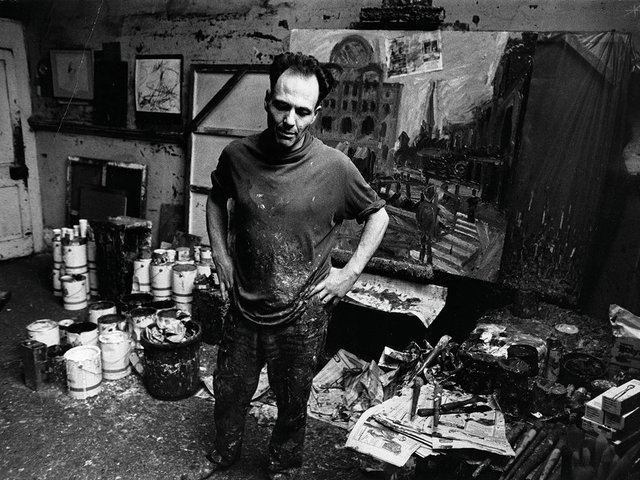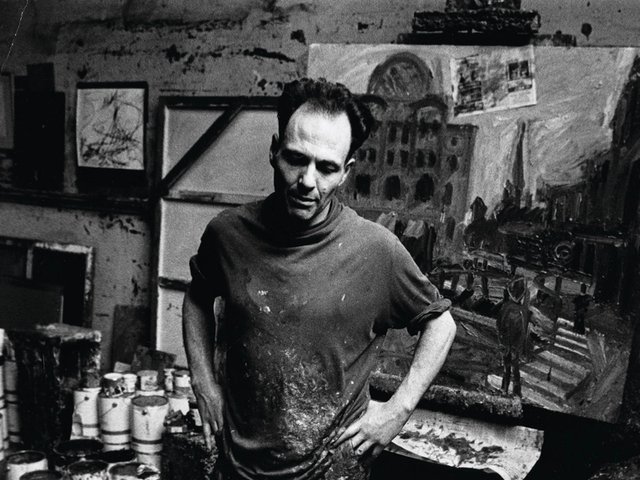A sudden flurry of exhibitions and publications signals a renewed interest in, and more considered appraisal of, the work of Frank Auerbach. Auerbach made his name as a painter of thick, endlessly reworked images, undeniably expressionist in idiom, and much influenced by the teachings of David Bomberg, under whom he studied.
Together with his friend and colleague Leon Kossoff, Auerbach painted the poorer, more neglected areas of London and a series of obsessive portraits of certain key sitters. He has worked in the same studio since 1954 (which he took over from Kossoff) and has continued with much the same subjects, however dramatically they may have changed over time. His work can be seen as partly a challenge to time, partly an uneasy collaboration with it.
One current publication is the catalogue of the superb exhibition of Auerbach’s building site paintings at the Courtauld Gallery (until 17 January 2010). That show is the first time this group of early pictures has been seen together—a group of 14 highly individual paintings with a handful of related drawings, but in no sense a series of deliberately linked images. After the exhibition, the catalogue becomes a book that can enjoy an extended shelf-life, and take its rightful place as an important addition to the Auerbach bibliography.
The other book that will be indispensable to Auerbach devotees is William Feaver’s lavish new monograph, which includes a complete catalogue of paintings and major drawings. Feaver has opted for a minimal, pared-down text, backed-up with a wide-ranging interview with the artist.
The Courtauld text is divided between three authors—Barnaby Wright contributes the main essay, followed by Margaret Garlake’s study of the dismal history of post-war planning (she quotes one unusually remorseful developer who admitted: “When I look at the streets of London and at the buildings that were put up in that era, I’d say we made a muck of it”), and culminating in Paul Moorhouse’s exploration of Auerbach and existentialism. Meanwhile, the catalogue section is equipped with detailed entries on each painting, again by Wright. The book bulges with hard-won thought and learned quotation.
Wright has compiled a thorough and interesting introduction to his subject, citing a disparate range of authorities from J.M. Richards and John Piper to Rosalind Krauss and Melanie Klein, by way of that double act of 1950s and 1960s art politics, John Berger and David Sylvester. But do we have to have Georges Bataille, that dangerously fashionable old dissident surrealist, without reference to whom no serious text these days seems able to reach a conclusion? And am I alone in finding that too much theory can compromise my enjoyment of paint? As always with an art publication worth its salt, we are sent back to the art with renewed interest.





